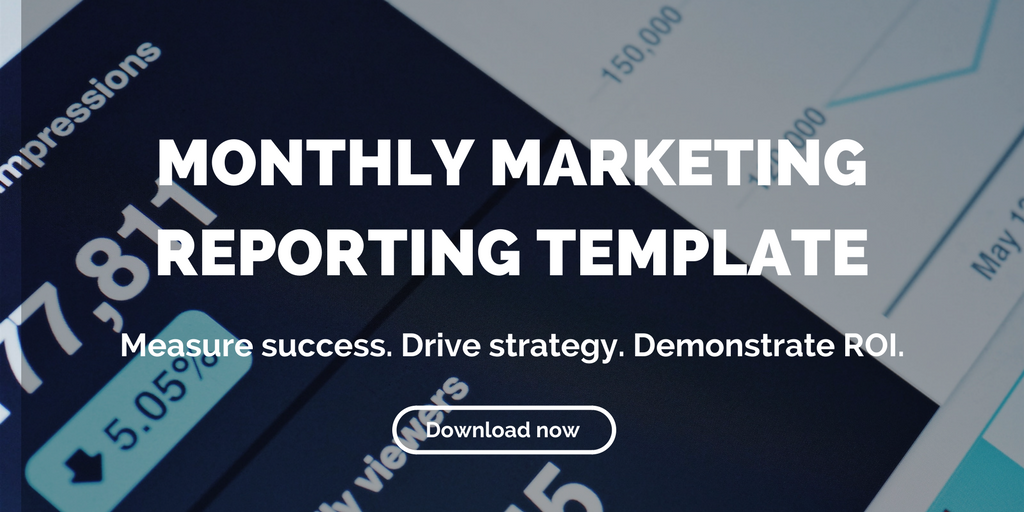Posts Tagged "ROI"

How to Explain Content Marketing ROI to Win (or Keep) Buy-In
Proving content marketing ROI can seem like a daunting task for real estate marketers, but finding and analyzing the right metrics effectively is crucial to measuring ROI, and ensuring buy-in.
Highlights:
- Talking about marketing as if it’s an art rather than a science does a disservice to your department and to your brand as a whole.
- Make sure your executives understand the nature and goals of your marketing strategy.
- The right metrics will help you track ROI, and justify executive buy-in.
Accountability and showing a solid return on investment (ROI) is everything when it comes to ensuring that your business is allocating adequate resources to marketing your brand and properties. And let’s face it, too many executives think that marketing is, at best, about supporting sales or, at worst, a department that exists to paste logos onto coffee mugs.
Writing for Marketo, Content Marketing Specialist Bryson Runser points out that as an “informed marketer, it’s your duty to infuse credibility into your organization by way of meaningful metrics that tie directly to your top and bottom line.” While the C-suite famously cares nothing about internal marketing metrics like Facebook likes or click-through rate, metrics are crucial to the success of marketing real estate. Not only that, effective use of metrics is the best way to establish the function and importance of the marketing department within your organization.
Get your audience on the same page
Before we dive into the nitty-gritty of proving content marketing ROI for the C-suite, it’s important to acknowledge that content marketing hasn’t been around all that long. It’s only in the past decade that the real estate industry has been reshaped by digital and content marketing. This means that you can’t necessarily count on the fact that your organization’s higher-ups understand exactly what content marketing is.
Take the time to make sure your executives understand not only the definition of content marketing, but also how it will help your real estate brand grow and your business achieve various specific goals. Content marketing expert Julia McCoy suggests using approachable metaphors, such as “content marketing is a vehicle, and content marketing strategy is the engine. The vehicle takes you to your destination only if the engine is in good shape.”
Numbers don’t lie
One of the main aspects of the “crisis of accountability” is a problematic view of what marketing is: “if marketing leaders insist that marketing is an art and not a science,” Runser writes,”then the department will remain isolated from other groups.” Establishing that content marketing is not only dependent upon data, but can also be measured, is key to changing that perception.
“Marketing must be able to justify their expenditures as investments in revenue and growth,” writes Runser. Of course, it’s partly a chicken-and-egg issue, since getting to the point of being able to talk about expenditures in this way does require investment from the top of your business.
We know that measuring the impact of content marketing can be tricky. But it’s not impossible. The first step is determining the right metrics to track. For more detailed ideas and analysis, check out this post, which details how to determine and use metrics for real estate marketers to measure the impact of content marketing on brand awareness.
Why are you reporting?
Collecting and reporting on content marketing ROI can feel like you’re spinning your wheels and collecting meaningless data. But it’s crucial to keep metrics focused on the main goal: to enable you and your business to make decisions that improve your marketing efforts. “This is the difference between backward-looking measurement and decision-focused management,” says Runser.
Data for the sake of data doesn’t do any good. Data should be used to shape insights, which in turn informs priorities and actions for your business. We’ve written before about the dangers of vanity metrics, which have no bearing on your bottom line but can give you an inflated sense of success.
It’s very easy to fall into the trap of meaningless data collection, especially when marketers are often struggling to prove their worthiness to the C-suite. But using metrics to improve marketing’s performance will go a long way towards winning over executives. “[B]y aligning data measurements with your company’s strategic objectives,” Runser writes, “it will be easier to allocate resources by revenue impact.”
Related posts:
- What Metrics Should You Track in Real Estate Marketing?
- The Metrics You Should Be Measuring in Real Estate Marketing (Hint: Not Vanity Metrics)
- Social Media Can Be a Strategic Weapon in Real Estate Marketing
Posts Tagged "ROI"

Measuring Content Marketing Success? Check Out Our Top 3 Posts for Analytics and ROI
Measuring content marketing success for real estate can seem like a daunting task. Our top 3 blog posts on analytics and ROI will keep you on track.
We talk a lot here at Fronetics Real Estate about the importance of a data-driven approach when it comes to measuring content marketing success for real estate. Without a documented strategy, your efforts are likely to be scattershot and aimless. To grow your business strategically, you need to track your efforts, analyze successes and failures, and determine ROI.
This year, we’ve focused on analytics and ROI several times on our blog. Measuring content marketing success can often seem daunting, so we’ve aimed to share some tools that work for us. We’ve discussed why it’s important to benchmark your content marketing efforts against competitive properties, published a guide for real estate marketers to measure that ever-elusive brand awareness, and offered up a monthly marketing reporting template to help you track the right metrics.
Here are our top three most read analytics and ROI posts for 2018.
1. What Metrics Should You Track in Real Estate Marketing? (It’s key to measuring content marketing success)
Traditional real estate marketing involved a lot of “post and pray.” That is, marketers would place ads in local publications, on billboards, and with other traditional media outlets and hope that buyers and tenants would read them and take interest.
Our monthly marketing reporting template for real estate will help you measure success, drive strategy, and demonstrate ROI. Read more.
2. Why You Should Benchmark Real Estate Marketing Against Competitive Properties
When people are searching the internet for apartments or condos, what are they seeing? Part of an effective, data-driven marketing strategy is regularly taking the time to benchmark real estate marketing against competitive properties.
We all know that competition drives results. Take Elaine Thompson and Michael Phelps. In August 2016, Thompson claimed the title of the world’s fastest woman, and Michael Phelps became the most decorated Olympian of all time. They achieved these incredible feats by continuously pushing themselves to do better — and they weren’t just tracking and measuring their personal performance. Read more.
3. How to Measure Brand Awareness: A Guide for Real Estate Marketers
When it comes to selling property — particularly luxury properties — growing brand awareness is an important goal. Prospective buyers need to know that your property exists and that it can provide the kind of lifestyle that they’re looking for.
Measuring how well you’re doing at getting the word out about your brand and property/properties is critical to optimizing your marketing strategy. But measuring brand awareness can be tricky. Read more.
A final word
Thank you for making us your go-to source for real estate content marketing insights. Please join us in 2019 to learn the latest on measuring content marketing success and everything else you need to grow your real estate business.
Related posts:
- Three Ways to Boost Your Real Estate Marketing with Video
- Infographic: Real Estate Social Media Strategies
- Video: How Content Marketing for Real Estate Can Help Sell Properties
Posts Tagged "ROI"

Start Your Property’s Social Media Program in 6 Steps
When launching a property’s social media marketing program, make sure you’ve thought through strategy, content, and audience.
Social media marketing for real estate is a must-do. The reality is that’s where the average American is spending his/her free time — nearly 2 hours a day, according to a recent study. Using platforms like Facebook, Twitter, and YouTube to market your property, you can:
- engage potential buyers
- build brand awareness
- elevate brand position within the market
- decrease cost per lead
- increase occupancy or sales
- improve retention
- and more
Sounds great, right? But where do you start? Which platforms should you use? How will you ever convince your boss that this is a valuable use of your time?
Starting your property’s social media program can seem like an intimidating task, especially if company leadership is skeptical of the benefits. Here are six steps to launching a real estate social media program that will grow your business to its full potential.
6 steps to start your property’s social media program
1) Speak in the right terms.
Convincing management that you want your team to spend more time on social media to gain “followers” or get “shares” could be a hard sell — even though that kind of engagement is key in real estate sales and rentals. To win support, focus your argument around the factors that are most important to them. Lead generation, lead nurturing, conversions, sales, ROI, profits: this should be the vocabulary with which you approach this conversation.
2) Create a strategy — and put someone in charge.
Only 11% of companies without a documented content marketing strategy find their efforts to be successful, compared to 60% of companies with a strategy in place. And that number rises to 86% when the company designates someone to lead the strategy.
Develop a content marketing strategy — inclusive of social media — that aligns with your goals for the property (e.g., more visits to the website, increased occupancy, better retention rates). And whether someone on your team heads up execution or you outsource that responsibility, the leader should continually monitor analytics and tweak the strategy accordingly to ensure the property’s social media program is meeting the designated marks.
Which brings me to…
3) Determine which analytics to track.
In real estate social media, shares, likes, and impressions speak to your brand exposure, so they’re important to track. But it’s important that you’re looking at more than just these surface metrics. (Read more about so-called “vanity metrics” here.) Leads generated, conversion rates, sales, and ROI are going to tell you if your efforts are helping your bottom line. If you have a good, flexible strategy in place, these metrics will help you adjust your efforts to ensure you’re achieving your business objectives.
4) Develop quality content.
Twenty-seven million pieces of content are shared every day — and a large portion of it is crap. A social media presence could be pretty pointless unless you’re not using it in a way that your followers find valuable. Good, quality content is the alpha and the omega, the key to engaging your followers.
One of the biggest mistakes real estate marketers make is using social channels to push a blatant sales pitch. You’ll quickly lose your audience that way. Your property’s social media should be about engaging target buyers or tenants, building brand awareness, and offering valuable and interesting information.
5) Decide which channels are right for your business.
Who are you trying to reach, and what are you trying to tell them? These are good questions to ask when trying to determine which platforms will comprise your social media program. You need to know who your target buyer/tenant is, and you need to know what kind of information you’re going to offer them.
There’s a wealth of data out there about who uses which channels and when. Most social media platforms also have their own built-in analytics tools that can help you determine the best time for engagement with your followers.
Another thing to consider: You’ll want to choose channels that you’ll be able to maintain regularly and which play to your strengths. If you don’t have the time, skill, or interest in taking regular photographs of things around your property, for example, Instagram probably isn’t for you. Remember, you’ll likely want to work through several different channels to reach a maximum number of potential customers.
6) Follow your competitors.
Following your competitors is a great way to stay up to date on what they’re doing, especially if you don’t have a ton of time or money for competitive research. And when I say “follow,” I don’t mean “copy or imitate.” I mean subscribe to their blogs, engage with them on social media, and like and share their content that you find meaningful for your audience. This way, you become part of the local conversation happening online, and you know exactly what your potential buyers and tenants are seeing from (and how they’re reacting to) your competitors.
Related posts:
- The Metrics You Should Be Measuring in Real Estate Marketing
- 6 Marketing Tasks Real Estate Marketers Can Outsource
- Social Media Can Be a Strategic Weapon in Real Estate Marketing
Posts Tagged "ROI"

The Metrics You Should Be Measuring in Real Estate Marketing (Hint: Not Vanity Metrics)
Don’t waste your time reporting on vanity metrics, which won’t tell you whether you’ve achieved your ROI.
We all want to see the fruits of our labors. Whether renting a new property or launching a social media campaign, we look for instantaneous numbers that will affirm we made the right choices. But here’s the problem: not all metrics are created equal.
So-called vanity metrics are measurements that have no bearing on your bottom line but can give you an inflated sense of success. Generally, they are easy to calculate but are influenced by too many factors — and are too vulnerable to random external events — to be reliable.
Website visits and number of subscribers are two classic examples. A spike in homepage hits may be the result of your marketing efforts, or it may be because of ghost spam. (Or both.) Regardless, more visits do not necessarily correlate to increased revenue — just more visits. In the same vein, having 100,000 email subscribers means nothing if only 1% are opening them. You actually could be losing money in terms of resources allocated if the emails aren’t helping drive sales.
Investment vs. vanity metrics
That’s why it’s crucial to focus on return on investment instead of vanity metrics. You could waste hours reviewing a hundred different analytics that tell you nothing about how revenue was affected by a particular effort. Or, worse, you could use vanity metrics to justify decisions that don’t achieve their ROI.
As a simplified example: say you spend $1,000 on a display ad for a new apartment complex targeting established professionals on a local news website, and your analytics report that 100 people clicked through. This sounds like success! But don’t celebrate just yet. When you dig past the vanity metric, you find an extremely high bounce rate. That means most of those click-throughs left your site immediately, neither engaging with your property nor moving any closer to becoming a tenant. In fact, you find that only one click-through converts. Was it worth paying $1,000 for this one potential tenant? Probably not.
But say you ran another $1,000 display ad, one that targets a younger audience than you think your property fits. Only 20 visitors clicked through, which sounds less successful than the other ad. But when you follow those 20 click-throughs, you find that 5 ended up renting units, meaning the ad pays for itself many times over. You’ve also learned that perhaps a younger audience is more suited than you thought to your property. The ROI proves that the vanity metric was quite misleading in this case.
Metrics that help you make decisions
Lean-startup pioneer Eric Reis, who coined the term vanity metrics, said, “The only metrics that entrepreneurs should invest energy in collecting are those that help them make decisions.” In other words, measure the things that will tell you if an effort was profitable so you know where to put your time and money.
While vanity metrics tell you nothing about your bottom line, ROI can help you determine whether it was worth spending your resources in a particular way. This is extremely useful on platforms like blogs and social media, where things are constantly changing. Using ROI as a litmus test, you can keep experimenting and making sure you’re using these tools effectively. Tracking a vanity metric like number of followers, which is likely to build over time regardless, gives you no indication of which experiments were successful and which weren’t.
Your resources are limited, so it’s crucial to evaluate your efforts with meaningful numbers that illustrate their effect on your bottom line. Calculating ROI might take some time — both in the few extra minutes to do the math and the amount of time that needs to pass before all the data is available — but that number will be infinitely more valuable to you than any vanity metric on your Google Analytics report.
Related posts:
- Social Media Can Be a Strategic Weapon in Real Estate Marketing
- How Pay-Per-Click Helped This Property Get 54 Leads
- Learn How Content Marketing Increased Real Estate Sales by 37% in 90 Days



